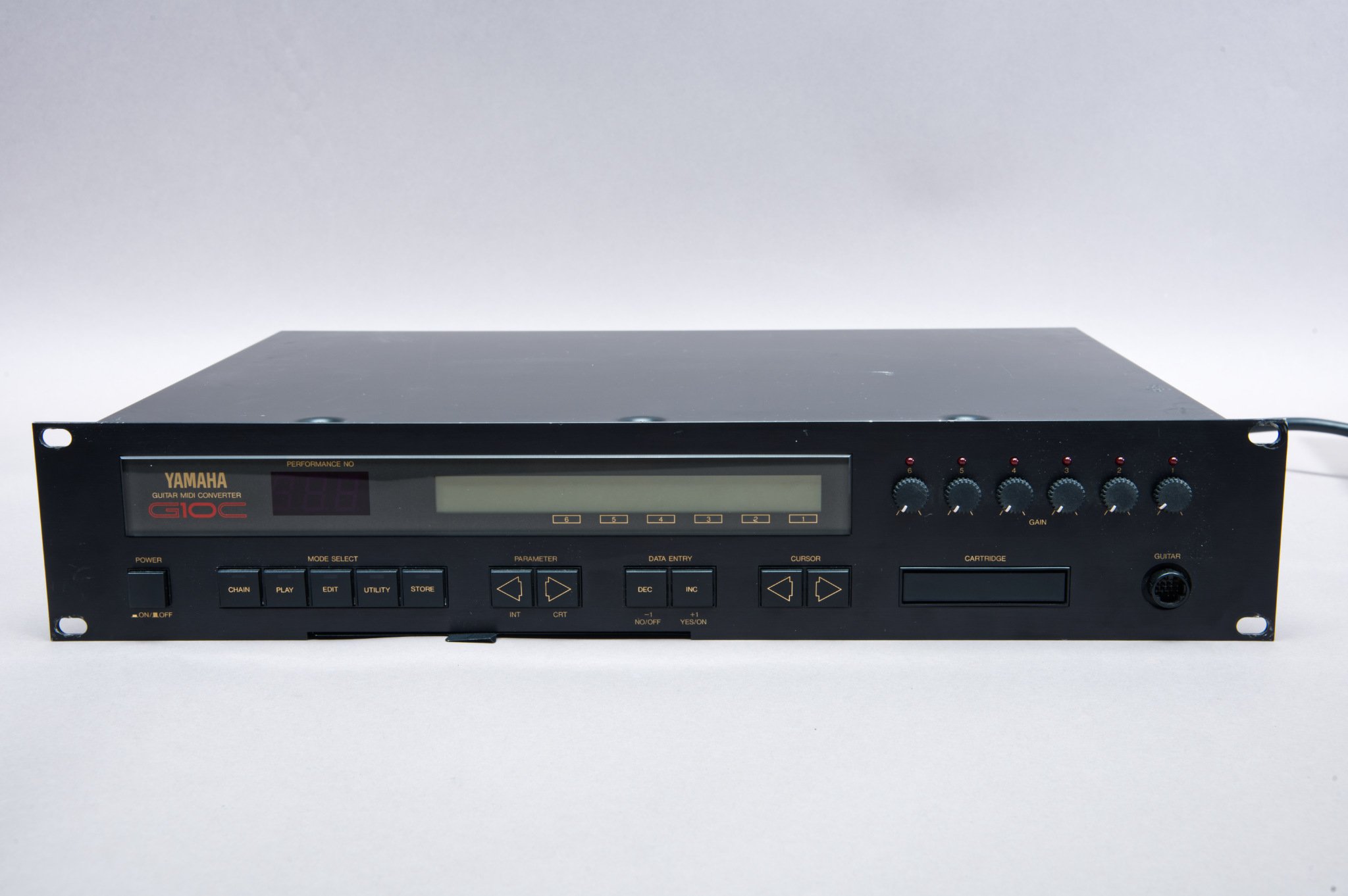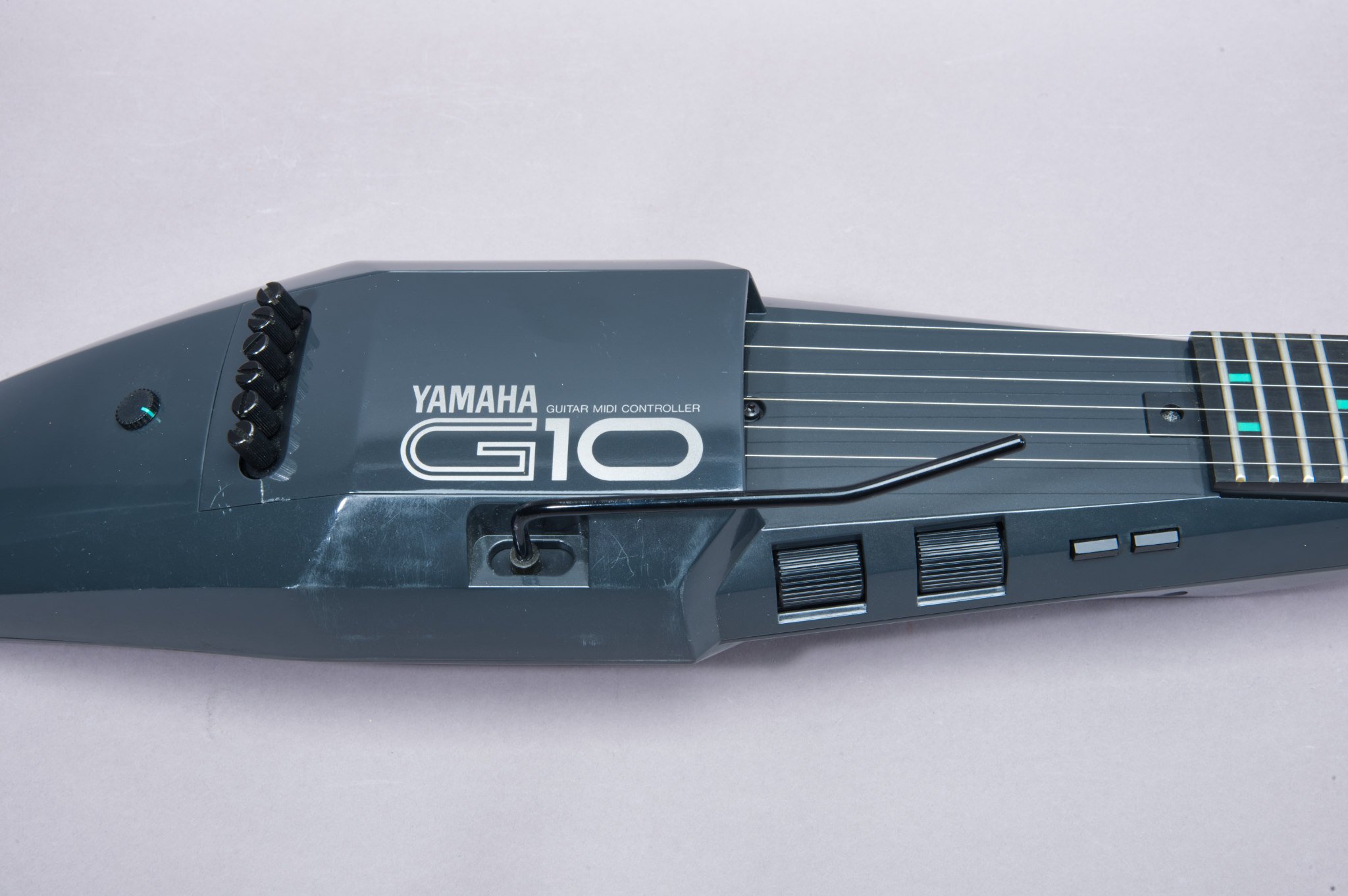The "Yamaha G10" Ultimate Package
The "Yamaha G10" Ultimate Package
The Ultimate Package Yamaha G10 is composed of several extra pieces that just the normal G10 and G10C pairing.
The package includes:
G10 Guitar Midi Controller.
G10C Guitar Midi Converter.
QX7 Digital Sequence Recorder.
TX7 Tone Generator.
Companion to the DX7 Synthesizer. This is a step programmable, digital sequencer that was very popular in the 1980′s.
Offers high-performance 2-track digital sequencing in any MIDI-based digital music system. The QX7 is capable of recording anything you play on any Yamaha DX synthesizer or other MIDI keyboard–complete with response and function parameters such as pitch bend, modulation, etc.
What you play will be reproduced exactly.
You can also write in notes in the ” step ” mode, letting you create pieces that would be impossible to play live.
Overdubbing capability is practically unlimited, and you can control more than one FM tone generator–say a DX7 Digital Programmable Algorithm Synthesizer and a TX7 FM expander– letting you sequence more than one voice at a time.
Further, a range of useful editing and other control functions let you modify and enhance your compositions with ease.
And there’s a cassette interface so you can save all your hard work on a standard cassette recorder for later use.
The QX7 Digital Sequence Recorder can give you virtually unlimited capability for creative, digital music production.

Have a look at this incredible video by Dr. Ika !!!
https://www.youtube.com/watch?v=v3M9sMmhsm0
Please have a look at these very interesting articles from August and December 1988 in Music Magazine Archives, mu:zines.co.uk :
https://www.muzines.co.uk/articles/yamaha-g10/347
https://www.muzines.co.uk/articles/yamaha-g10/2313
THE HISTORY OF instruments attempting to allow guitarists to play synthesisers is not a pretty one. From the mid-'70s' infamous and ill-fated ARP Avatar to the SynthAxe and Stepp guitars, quite a few manufacturers have bet and lost on their invention being the one to connect a million guitar players to the joys of synthesis.
A great deal of hope and anticipation was created by the announcements from companies (notably Passac, Beetle and Zeta) claiming to have overcome the technical hurdles that prevented most guitar synth systems from working in a way that makes sense to guitarists. Finally, it seemed, guitarists were going to have several workable alternatives for making the leap to MIDI.
Meanwhile, Yamaha quietly continued to work on their MIDI guitar controller - an instrument that others also felt would be the answer for guitarists looking to take part in the MIDI revolution.
With the release of the G10 Guitar MIDI Controller and G10C Guitar MIDI Converter, it was clear that the price alone has prevented the new Yamaha system from becoming a standard addition to most guitarists' equipment collections.
On the other hand, it did appeared to be a significant addition to the professional market.
The approach Yamaha have taken with the G10 and G10C is that of a dedicated MIDI controller. It uses a single set of .016 gauge (standard G-string) undamped guitar strings and has no conventional pickups or output jacks (and therefore produces no sound of its own).
The technology used by the G10 system to convert guitar performance into MIDI data (which bears a striking resemblance to the system used in the Beetle Quantar) is the main thing that helps separate it from the rest of the field. To quote the Yamaha propaganda, "An ultrasonic sound is transmitted along the strings and the fingered fret is determined by analysing the reflected wave - sort of a musical 'sonar' system". The whole process supposedly occurs in well under a millisecond so that no delays of the type found in systems which use pitch-to-MIDI conversion occur. The velocity of the note is determined by a separate electromagnetic pickup, referred to by Yamaha as a string velocity sensor, and a third pickup, using "optical shutter" technology, is used to detect string bends.
The three pickups work in tandem to produce a system which is supposed to be able to accurately track such things as muting, bends, hammer-ons and pull-offs. Although not yet thoroughly tested outside Yamaha, the system seems to do an excellent job of tracking.
The G10 guitar connects to the 2U-high rack mount "brain" of the system, the G10C, via a special seven-metre lead. The signals from the guitar are then processed and sent out of the G10C's MIDI Out port (it also has a Thru port and an In for SysEx dumps). Though it may provide more flexibility, this two-piece system seems more cumbersome than the all-in-one approach taken by the Casio MIDI guitars and the Beetle system. They both allow you to connect a MIDI lead straight from the guitar into whatever synth you're using.
Other connections on the G10C include jacks for a single footswitch and a single foot pedal, which can be assigned to control a variety of parameters per G10 program, and two jacks for the increment and decrement system of stepping through the 64 G10 programs (an additional 64 can be stored on an external RAM4 cartridge).
You can also select synth programs from the G10 itself, which has two program select buttons along the bottom edge of the guitar and an LED near the top edge to show you which program you've selected. Next to the program inc/dec buttons are two programmable control wheels - like miniature pitch and mod wheels - which can be assigned to such functions as volume, modulation, portamento time, panning, and so on. You can also assign the whammy bar to performance controls like pitch-bend. In addition, the G10 features an overall sensitivity control (the G10C features individual gain knobs per string) and a breath controller input. All in all, pretty extensive performance control.
Programs on the G10C include volume, transposition, velocity curve (four preset and four programmable) and MIDI channel per string, mute level, program changes, controller assignments and other parameters.
Though the G10C does not produce any sounds of its own, within its memory Yamaha has stored a special group of patches and performance parameters for the TX81Z and TX802 synth modules - designed and programmed to be used specifically with the G10 system. You can dump these into the respective synths via the G10C's MIDI Out.









